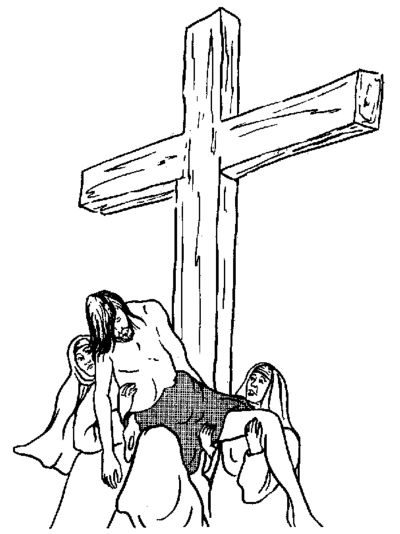
Until now, my children have been used to my own earthy explanations of Easter festivities: the rebirth of the natural world after winter, longer days, warmer air, little lambs and ducklings, and the bursting forth of new life. Our staple Easter book is The Berenstain Bears and the Real Easter Eggs, emphasising the “real meaning” of Easter (i.e. the regeneration of nature, rather than just the chocolate eggs it inspires). We have discussed various world myths around the theme of spring/rebirth in a way that would be recognisable to many humanist families. But now I am worried.
The two eldest (aged eight and six) attend a religious school, through lack of a secular alternative here in Northern Ireland. Annoying as that is, I had contented myself with the idea that primary school religion is really just about being nice to people. I, perhaps naively, told them to exchange the word “God” for the word “Good” and that most of it would make sense. I must have blanked out the gory bits. My eldest is in a class where the other children are preparing for their First Communion this year. That involves not only the human sacrifice itself, but the eating of the flesh and the drinking of the blood of the deceased. Not so fluffy after all, and I’m suddenly filled with self-doubt. Are my children traumatised? Confused? Has my upbeat confidence in their intellectual abilities and in the filter of a critical home environment been recklessly irresponsible? Have they been successfully brainwashed with my permission? Maybe now was a good time to check whether fluffy chicks or murdered deities were dominating their thoughts of the forthcoming festival.
I interrogate as casually as I can. “Have you heard the story about Jesus and Easter?” “Of course!” they shout in unison, “the one where he dies on the cross and then comes back from the dead”. “How did he manage that?” I inquire. “By god-magic” says the six year old. “It’s called the Holy Spirit in school,” corrects his big sister. “I know,” says little brother petulantly (was he translating for me?). I wonder aloud if any good came from that sad story. Both nod. Six year old muses that all the people in heaven were sad that Jesus wasn’t there, so they were happy when he came back. Eight year old knows better. “Don’t be silly. His people were fighting against the Romans. They made a deal. As long as Jesus died, his people were allowed to win.” I unexpectedly find myself making a mental note to iron out their Christian mythology for them in the interests of religious literacy.
“Did the story make you feel sad?” I ask. “Not really – it’s just a story. Except the crown of nettles –that was really mean.” I mention that they were inconsolable when Sirius Black was killed by the Death Eaters, despite the fact that Harry Potter is also just a story. “That’s different, Mum. That feels so real”. I think we’re safe for now.

